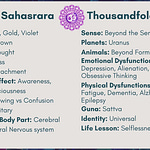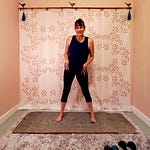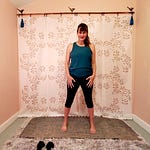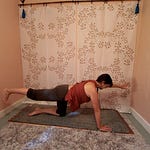Full Practice - Scroll to the Bottom!
As I prep for the next writing journey and wrap up the summer, I’ve decided to keep adding to the video collection. If you’re in the movement membership, this is definitely a refresher!
Every Tuesday, we meet up in Live Stream Classes for Uplift Power Sculpt to rev the engine. For the next few weeks here, we’ll work with arms, core, and glutes- the first video is about form and alignment, the second brings it all together in a flow of yoga, weights, and cardio.
There are plenty of options to modify to meet your fitness needs, but please always consult with your physician- if you’ve been inactive for some time or before starting a new exercise program. If you’re just getting started with weight training, read these tips for a safe practice.
The core is often thought of as just the abdominals, but when we talk about the core, we’re referring to about two dozen muscles, including the abdominals, the hip flexors, and even lower back muscles. These are all the muscles that cooperate to keep our spine upright and moving in all six directions. By strengthening the core muscles, we can support our posture and make ourselves more structurally sound. With stronger abdominals and more supple hip flexors, the lower back experiences less pain. Altogether, tapping into your core power leaves you feeling like a bad a$$. 💪👇
Intro Core: Form & Alignment
The introduction is meant to slow things down enough to connect to form and alignment for three different exercises that target the abdominals. We’ll go through suitcase crunch, Russian twist, and plank. This will help you set the pace and the number of reps best for you.
You could do the circuit with this video and then decide to go through one or two times for an extended practice. Take a few minutes to warm up before you start and stretch when you finish.
Continue to work a balance of strength and stretch; this is the magic equation to feel steady and free in the body, to move with ease and grace.
Releasing tight hip flexors, including the psoas - not only reduces low back pain, but increases a fluid mobility.
Strengthening the abdominals naturally corsets the mid-line to create stability and improve balance.
Full Practice:
This brings it all together for flow. Once you have the basic form of each core exercise, you can meld in the yoga and fire it up with cardio. Remember that balance between honoring the edge and meeting the challenge. Slow things down or modify as you need. (The intro video has some good suggestions for modifications.)
You did it! You did it! You did it! YAY YOU!
Visit the Yoga library for two more practices for happy hips and core stability:











